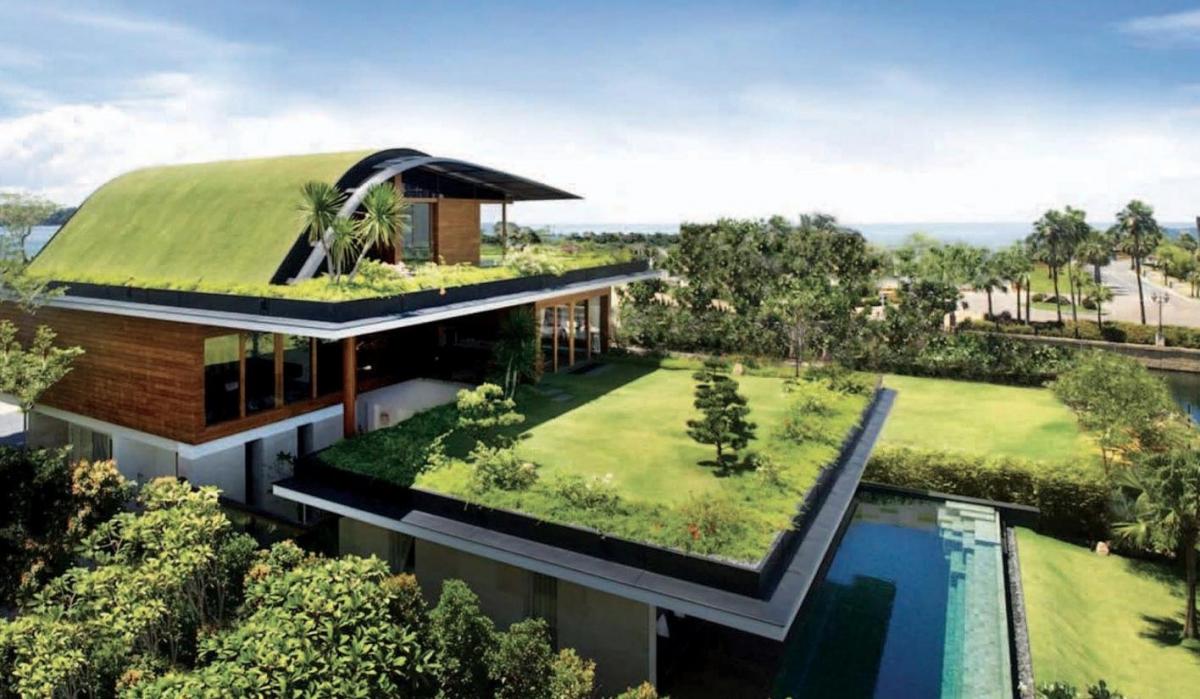In a world where environmental concerns loom large, the
construction industry is embracing a paradigm shift towards sustainability. The
towering structures that define our skylines are no longer just symbols of
progress; they are now ambassadors of responsible building practices that
safeguard our planet's future. The synergy between innovation, conscious
design, and green construction materials has given rise to a movement known as
sustainable construction—a movement that is not merely a trend but a necessity.
The Urgency of Sustainable Construction:
As the global population burgeons and urbanization
accelerates, the environmental impact of construction becomes increasingly
evident. Unsustainable construction practices can lead to resource depletion,
pollution, and a heightened carbon footprint. However, the emergence of
sustainable construction presents a glimmer of hope. This transformative
approach seeks to reconcile the built environment with the natural world,
fostering equilibrium rather than conflict.
Green Building Materials: Paving the Path to
Sustainability
Central to sustainable construction are the building
materials themselves. Traditional construction often relies on
resource-intensive materials that contribute to deforestation, pollution, and
excessive energy consumption. In contrast, green building materials are
designed to minimize environmental impact throughout their lifecycle—starting
from extraction to manufacturing, transportation, installation, and eventual
disposal.
Energy-Efficient Designs: A Blueprint for
Sustainability
One of the cornerstones of sustainable construction is the
integration of energy-efficient designs. Conventional buildings are notorious
energy hogs, consuming vast amounts of electricity for heating, cooling,
lighting, and appliances. Sustainable construction practices, on the other
hand, prioritize designs that leverage natural resources, optimize insulation,
and enhance ventilation. Passive design techniques, such as positioning windows
to harness natural light and heat, contribute to reduced energy consumption.
Moreover, the strategic use of shading devices, green roofs, and solar panels
can further minimize a building's carbon footprint.
LEED Certification: A Guiding Light for Sustainable
Construction
Within the realm of sustainable construction, LEED
(Leadership in Energy and Environmental Design) certification stands as a
beacon of recognition for environmentally conscious building projects.
Administered by the U.S. Green Building Council, LEED certification evaluates a
building's performance across several categories, including sustainable sites,
water efficiency, energy and atmosphere, materials and resources, indoor
environmental quality, and innovation in design. Achieving LEED certification
requires meticulous planning, design, and execution, underscoring a commitment
to sustainable principles.
Benefits Beyond the Environmental Impact
The pursuit of sustainable construction extends beyond
environmental stewardship; it also yields tangible benefits for stakeholders
and communities. From financial savings stemming from reduced energy
consumption to improved indoor air quality, sustainable buildings create
healthier and more productive environments for occupants. The incorporation of
natural light and ventilation fosters well-being, and green spaces enhance
quality of life. In addition, sustainable construction can bolster a company's
reputation, attract eco-conscious investors, and align with the values of an
increasingly environmentally aware consumer base.
Challenges and Future Directions
While the strides made in sustainable construction are
commendable, challenges remain on the path towards a greener future. The
adoption of sustainable practices requires an investment in research,
development, and education. There's a need to bridge the gap between innovative
ideas and mainstream implementation, and to encourage collaboration between
architects, engineers, developers, policymakers, and the construction
workforce.
Furthermore, the evolution of sustainable construction is
closely tied to advancements in technology. From innovative building materials
to data-driven designs and smart building systems, technology is shaping the
future of sustainable construction. This, in turn, influences the way we plan,
design, and construct our built environment.
Conclusion
As the sun sets on an era of resource-intensive construction
practices, a new dawn rises—one that is characterized by the principles of
sustainability. Sustainable construction is more than a trend; it's a
fundamental shift in perspective that aligns our built environment with the
ecosystems it coexists with. The fusion of green building materials,
energy-efficient designs, and LEED certification serves as a powerful catalyst
for change, one that acknowledges the delicate equilibrium between human
aspirations and the health of our planet.
In a world where the choices we make today reverberate for
generations to come, sustainable construction offers a blueprint for building
responsibly, preserving our natural resources, and creating spaces that
harmonize with nature. As architects, engineers, builders, and stakeholders, we
have a shared responsibility to embrace sustainable practices, leaving a legacy
of innovation, stewardship, and a greener world for future generations.
By embracing sustainable construction practices, we embark
on a journey of transformation—one that propels us towards a future where the
structures we create are not just symbols of progress, but also embodiments of
respect for our planet's precious resources. Let us walk this path with
purpose, creating a legacy that resonates through time.
*End of Blog.*


Comments
Post a Comment